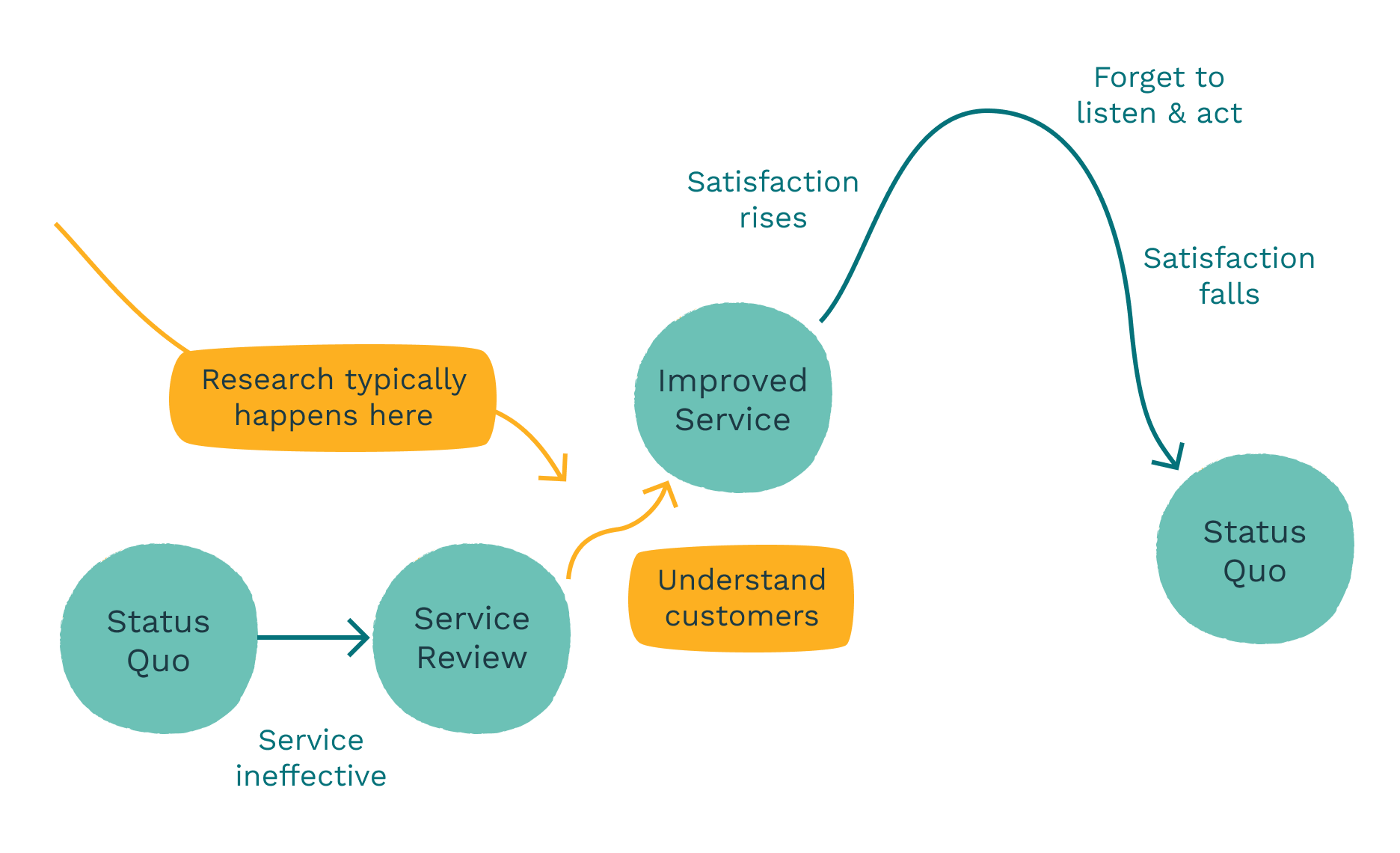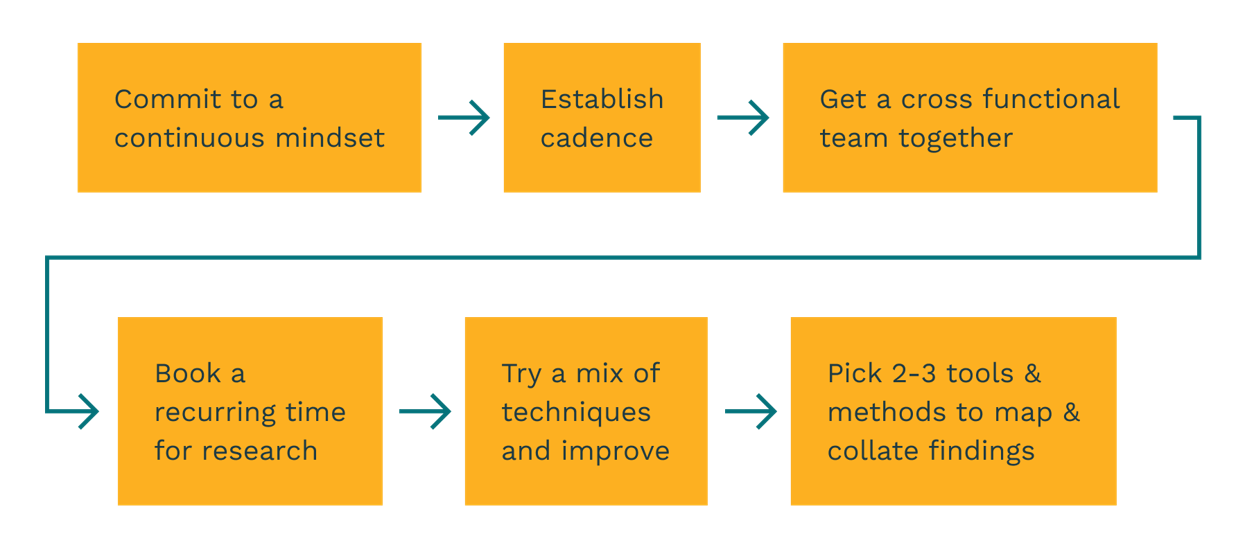It’s common for research to happen at the start of a project. Researchers are commissioned to speak with users and stakeholders, conduct surveys, and gather other qualitative information. Research findings are then used to inform or improve a service, or certain aspects of a service.
This can result in a boost for that service, where user numbers go up or satisfaction scores improve. From there, research often takes a backseat and we get back into BAU and daily ways of working.
Treating research in this way means we can lose perspective of user needs and pain points, or even what our stakeholders are telling us. Even when we've used human-centred design, maintaining a feedback loop is hard.
Continuous research can help bridge that gap. It’s both effective and efficient for delivering better experiences and outcomes.

Continuous research is a form of active listening
If our product or services are changing and user needs are changing, why is it that research gets stuck in a set-and-forget mode?
Continuous research offers a practical pathway to stay on top of customer needs and pain points. It can also help with clearer, effective decision-making and to de-risk service development, especially for sensitive needs.
By paying attention to how things are changing around you and your product, you can proactively develop new features, pivot your product or develop new ones entirely in response to what you’re hearing.
Continuous research is not just about talking to customers, it’s about an always-on research mindset. By keeping services relevant and responsive, you can deliver better outcomes.
Here's how to make it work
At Liquid, our framework looks like this. It’s about having a cadence and a set of processes:

Commit to a continuous mindset: It’s about understanding what's happening in your user space all the time.
Establish cadence: It doesn't have to be every day – it could be weekly, it could be monthly, it could be quarterly; whatever works for your team and the time that you can commit to it.
Get a cross-functional team together: Having a multidisciplinary team means you take the onus away from researchers and involve others in the practise of continuous research.
Book a recurring time for research: Making time is about making sure you are set up for success.
Try a mix of techniques and improve: Try different ways of looking at the data, sourcing user feedback, and how you collate it.
Pick 2-3 tools and methods to map and collate findings: This is about ensuring that you can deliver on the promise of continuous research and its long-term value.
Use existing customer touchpoints effectively and bridge the gap wisely
A key practical aspect to be aware of when doing continuous research is understanding all the channels that you have at your disposal.
- Take stock of all the customer feedback channels - from website feedback surveys, user analytics, page surveys, virtual assistant chats, social media feedback, etc
- Talk to other teams – support, sales, tech, product and marketing
- Keep your finger on the pulse by doing continuous interviews – these are quick, frequent 1:1 meetings with customers. You don’t need complicated discussion guides, just a list of general user-experience questions.
The continuous research process (AKA: What do I do with all the data?)
When you can see insights and data coming through from multiple sources, how do you make sense of it all?
- Identify and prioritise key feedback channels. Not every channel is going to be a gold mine of useful valuable insights
- Create snapshots of each individual interview so they're available to the overall team
- Sort, tag and categorise feedback from other customer channels and interviews
- Track data, findings and insights in a research repository
- Share, review, prioritise and deliver!
Tips for doing continuous research right
- Collaborate - set it up right at the get-go
- Have ways of working - have basic best practices and methods in place
- Don’t lose the big picture - look at continuous research contextually, don’t ignore strategic research
- Avoid an over-reliance on one type of data - everything is not an insight!
- Be curious - don’t just ask the same questions repeatedly
- Manage expectations – tell others what to expect from it
Read more:
Reflecting on designing services in sensitive areas
Diversity makes us better designers
Imagining the future of the connected student experience